I recently received an email newsletter from the National Gallery which had the title “When Art meets Fashion”, which immediately sparked my curiosity.
Mondrian Painting…. or Yves Saint Laurent dress?
You certainly wouldn’t think so if you saw how I dress but I have always had an interest in fashion. I am fascinated with the idea of how we choose to dress ourselves can reflect who we wish to present to the world. Even if you claim to have no interest in fashion for most of us, we make a choice of what we put on each morning, dressing up or dressing down, even if that choice is ‘this will do today’ (which seems to be my guide to what I wear most days as I pick up yesterday’s jeans and top). So, an interest in clothes and fashion is far from being a trivial curiosity. Our clothes matter, because how we choose to dress ourselves defines our identity. Our clothes tell a story.
“Dress has never been a straightforward business… On the subject of dress almost no-one, for one or another reason, feels truly indifferent: if their own clothes don’t concern them, someone else’s do.” Elizabeth Bowen from The Thoughtful Dresser by Linda Grant
As a child my Mum often made my clothes. We didn’t have a lot of spare cash and back then it was often a cheaper option. But I still have vivid memories of particular outfits that I loved. I had a little black and white patterned cotton dress that was a copy of one of my Mum’s. She had made them both. I remember a fabulous mini dress in a psychedelic pink and purple paisley pattern that zipped up the front to a Mandarin collar (again made by my mum) that I wore to my cousin’s wedding in the late 60s along with a pair of beautiful purple patent T bar shoes with my first ever heels, no more than an inch high cube but I felt so sophisticated and grown up! And the fabulous red coat with its gold buckled belt and military styling (from Marks and Spencer) that I owned at the beginning of the 1970s. It felt so daring and bold to have such a coat. (I own a red coat now over fifty years later, coincidently also from M & S)
Me, aged about 13, on the right in my red M & S coat
I remember how I felt when I wore these outfits, how they boosted my confidence and made me feel good, not that you would think so looking at the awkward teenager in her red coat at yet another cousin’s wedding. Clothes can do that; they can change how we feel. So, it is no surprise that I’m also interested in how the worlds of art, fashion and clothes overlap.
During the last century the connection between art and fashion has been far more than just the transformation of works of art into catwalk creations. There have been whole movements that showcase the way the worlds of art and fashion intersect and inspire each other.
In the early part of the 20th century the costumes of the Ballets Russes inspired a desire for vibrant patterns and luxurious fabrics that were translated into bold inventive garments. Soon ballet, cinema and theatre were all feeding into mainstream fashion and joined by avant-garde artists such as Sonia Delaunay who was equally at home creating modern embroidered coats and fabrics with stunning Art Deco designs as she was making abstract paintings
A Sonia Delaunay embroidered Jacket, 1924
Salvador Dali created surrealist designs for the couturier Elsa Schiaparelli that were witty and ground-breaking. One example was the Lobster dress, a white silk evening dress with a crimson waistband designed by Schiaparelli with a hand painted lobster by Dali, who had been featuring lobsters into his work as symbols of sexuality.
The snaking lobster works its way down the skirt of the dress between the legs of the wearer. This was considered quite shocking at the time. The dress was worn by Wallis Simpson before her marriage to Edward VIII and she included it in her wedding trousseau. It certainly didn’t help warm her to the British public. Dali and Schiaparelli collaborated on other outfits too, such as the skeleton dress, which was created from black silk with trapunto quilting to represent the human skeleton on the outside of the garment.
This skeleton theme has continued to inspire other notable fashion designers such as Alexander McQueen with his ‘spine corset’ which is part garment, part body jewellery.
Spine Corset, Alexander McQueen
McQueen’s ingenious designs are themselves works of art. The ultimate accolade for his form of expression came when one of the major art galleries of the world, The Metropolitan Museum of Art in New York put on a show of his work, Savage Beauty which showcased McQueen’s themes that extended beyond the usual realms of fashion. His work encompassed images of chivalry, brutality and romance, heroic women and unconventional beauty, together with themes of nature, gender, history, life and death. They make dark and powerful statements. His catwalk shows were suggestive of avant-garde installations and performance art rather than fashion shows as you can see in the following clip.
The ultimate meeting of art and fashion might be in the Vivienne Westwood portrait collection. The models themselves looked as though they had stepped out of an old English portrait painting. The opulent fabrics chosen for the garments appeared to replicate the way a painter might select elements of dress in portraits. Working in London’s Wallace collection she took inspiration from an 18th century baroque mirror and translated this into gold foil print used on black velvet dresses. She represented landscape in paintings by creating a subtle patchwork of tweeds in different weaves and colours. And finally, she placed a photographic print of a Boucher painting Daphnis and Chloe (Shepherd Watching a Sleeping Shepherdess) 1743 from the Wallace collection onto the front panel of her corsets.
‘Picture galleries are essential to my work, and not only paintings containing costumes but also landscape and still life, in which harmonies of colour, design and movement can germinate so many fashion ideas’ Vivienne Westwood in Cutting Edge, 50 years of British Fashion, V & A publishing
Fashion and textiles can also become integral to the work of the artist too. Henri Matisse (1869-1954) came from a family with long associations with the textile industry in Northern France. He had a lifelong fascination with textiles and was a collector of fabrics, exotic costumes, carpets and wall hangings. These often featured in and provided the inspiration for his paintings, later becoming a springboard for his radical explorations of decorative pattern and colour.
Henri Matisse, Purple Robe and Anemones 1937
The Mexican artist Frida Kahlo was known for the unique way she dressed in indigenous ethnic costume. Her clothes, accessories and jewellery were styled with as much care and thought as her paintings in which the items regularly appear.
Frida Kahlo painting in her studio
This crossover between the way we dress, fashion and art is a subject I find fascinating and no doubt I will return to it again in more detail, but for now, back to that email ‘When Art meets Fashion’. I clicked on it expecting something inspirational – maybe a new V & A style blockbuster exhibition, something sensational based on works in the National’s collection, or even a thoughtfully written essay on the subject. There was a frisson of excitement as I pressed the button on my keyboard. You can imagine my disappointment when the image that popped up was a plain white functional T shirt with a square print of Van Gogh’s sunflowers on the front available in the NG online shop. Neither art nor fashion in my humble opinion so needless to say I won’t be buying one. Mind you, it might be an improvement on the moth eaten, blackberry stained T shirt I wore to walk the dog this morning!





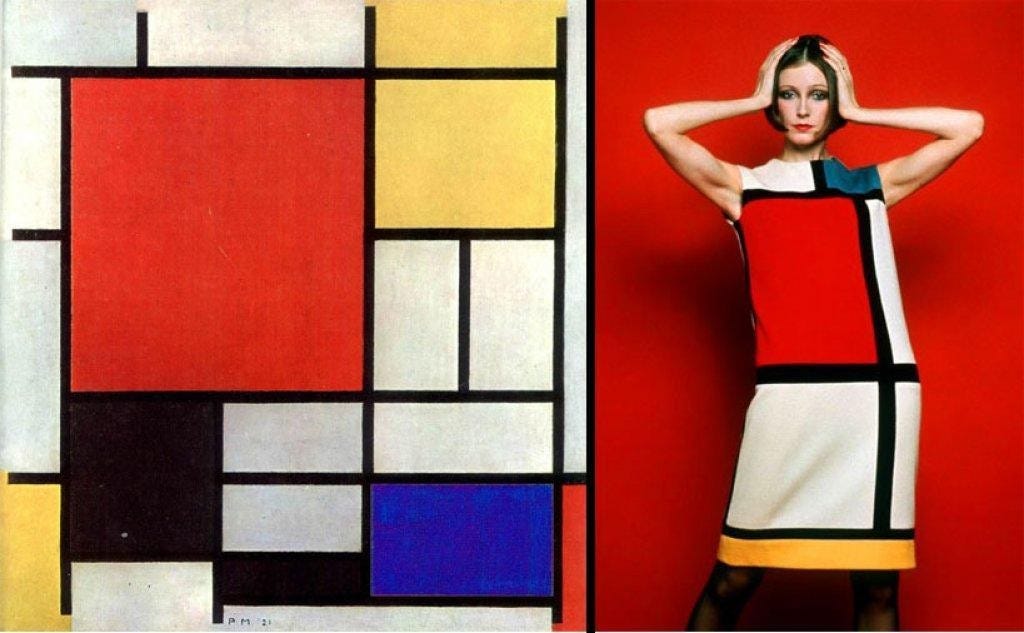
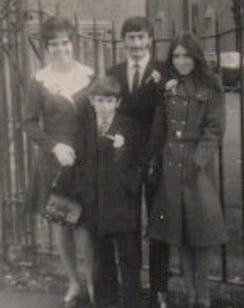
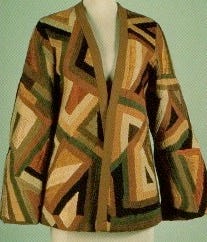
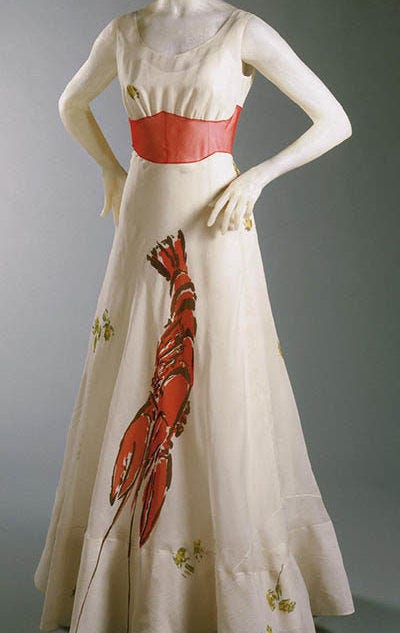

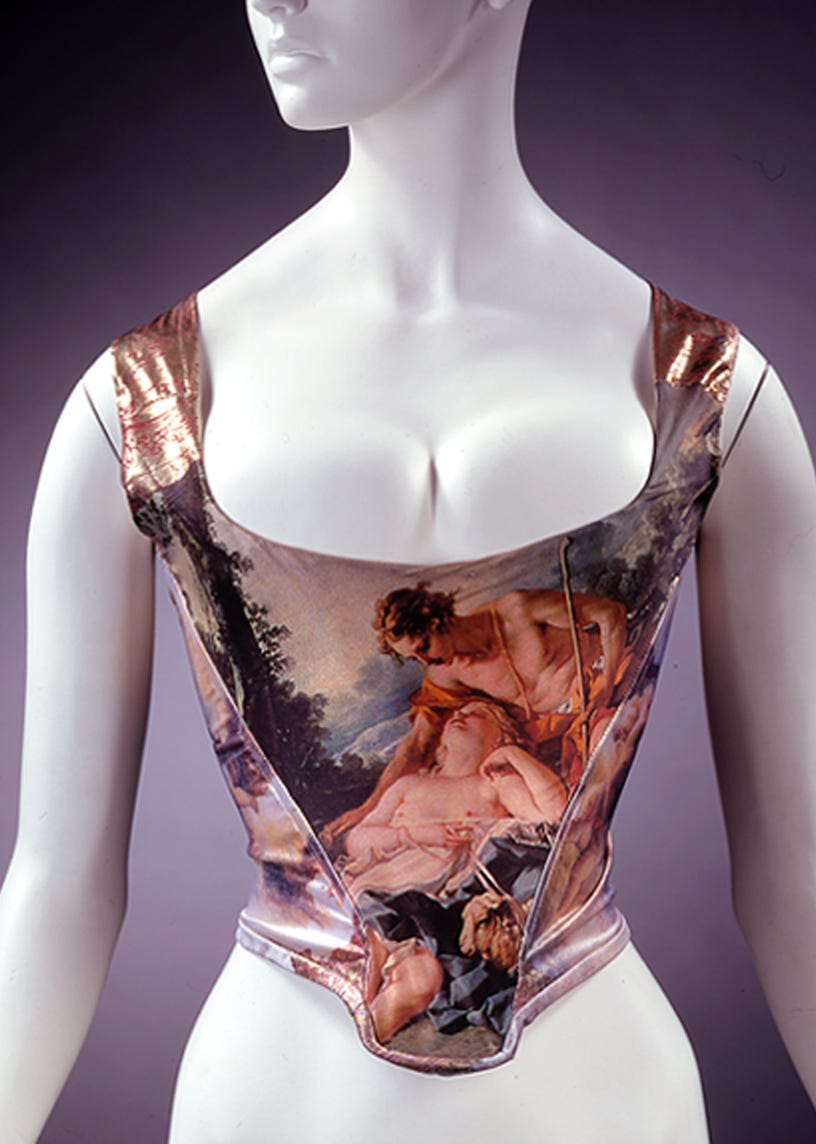
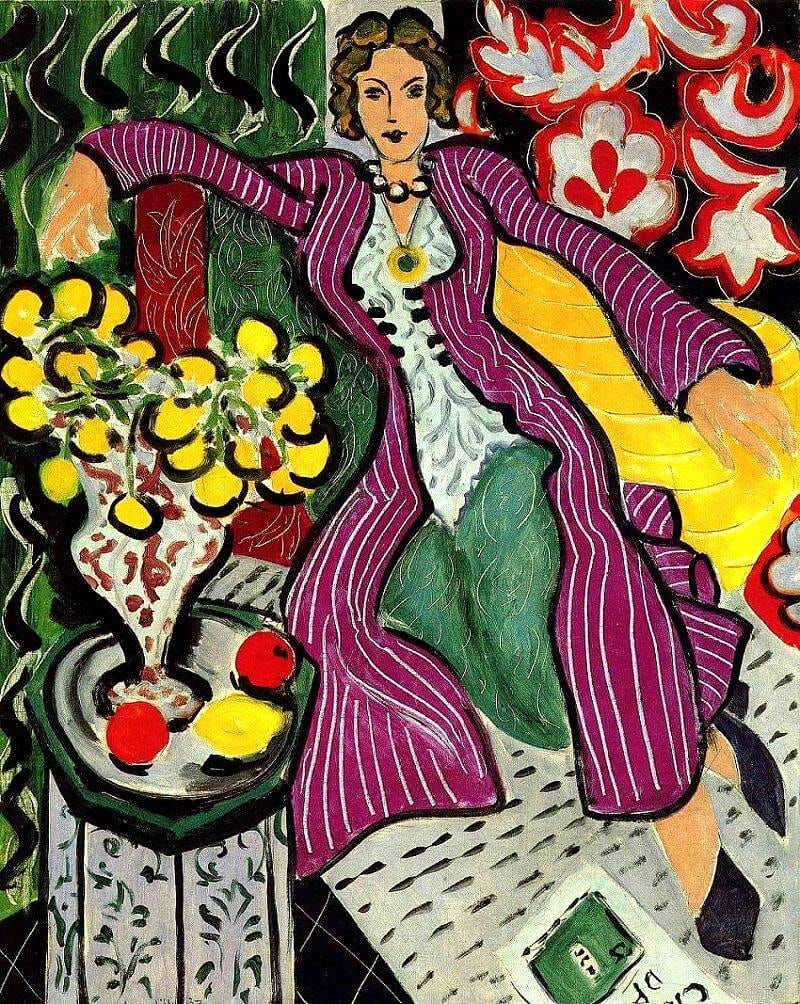

I enjoyed reading this Gina. I made most of my non school clothes when I was a teenager because it ensured that I wouldn’t face the ultimate embarrassment of turning up to a party in the same thing as someone else. It also allowed me access to designer wear through their patterns as the actual garment would never have been affordable on a paper round budget. The exploitation of Op Art by Mary Quant is an interesting example of the tensions between the two as well as how translatable one is to the other. Thanks for sharing.
An interesting read, yes a t-shirt with a print of a painting is hardly art. There is an exhibition of Andy Wharhol textiles at the Fashion and Textile Museum at the moment, although I haven't visited.